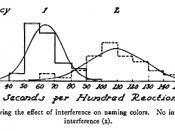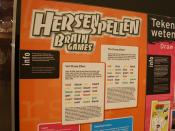Abstract
The purpose of this experiment was to determine whether the position of the colored letter in Besner et al's single-letter-coloured Stroop task affects the amount of interference observed in naming times. The participants of this study was randomly gathered by 2nd year Psychology students at Monash University (N = 100). The participants were presented with a single stimulus on each paper and were told to ignore the letter string and to identify the either one of the three colours in a quickly and accurate manner. The result under the whole word on colour name has the highest mean on Stroop interferences compared to the whole word on non-word control. Due to some limitation in the methodology, the effects of the Stroop interference on the different positioning of the colour letters to word and nonword colour would not be able to justify in this experiment. Therefore, more improved researches are needed, to justify the Stroop effect.
Reading is a learned behaviours that are also widely argued to be automatic process that several researchers indicate that competent readers process the irrelevant word without consciousness or intent (Besner, Stolz & Boutilers, 1997, p 221). Several studies has looked into why it takes more time to name colours than to read colour name which lead to study of stroop task (Stroop, 1935). The stroop effect has been used to demonstrate the automaticity of recognition processes, in particular word recognition where it has become a very useful tool for cognitive psychologist.
Stroop effect occurs when the name of the word interferers with the overt response to name the ink colour in which the word is written where it allows the investigation of the capacity of irrelevant stimuli to interrupt ongoing activity
(Sharma & Mckenna, 2001). According to Besner et al., (1997) the standard...


